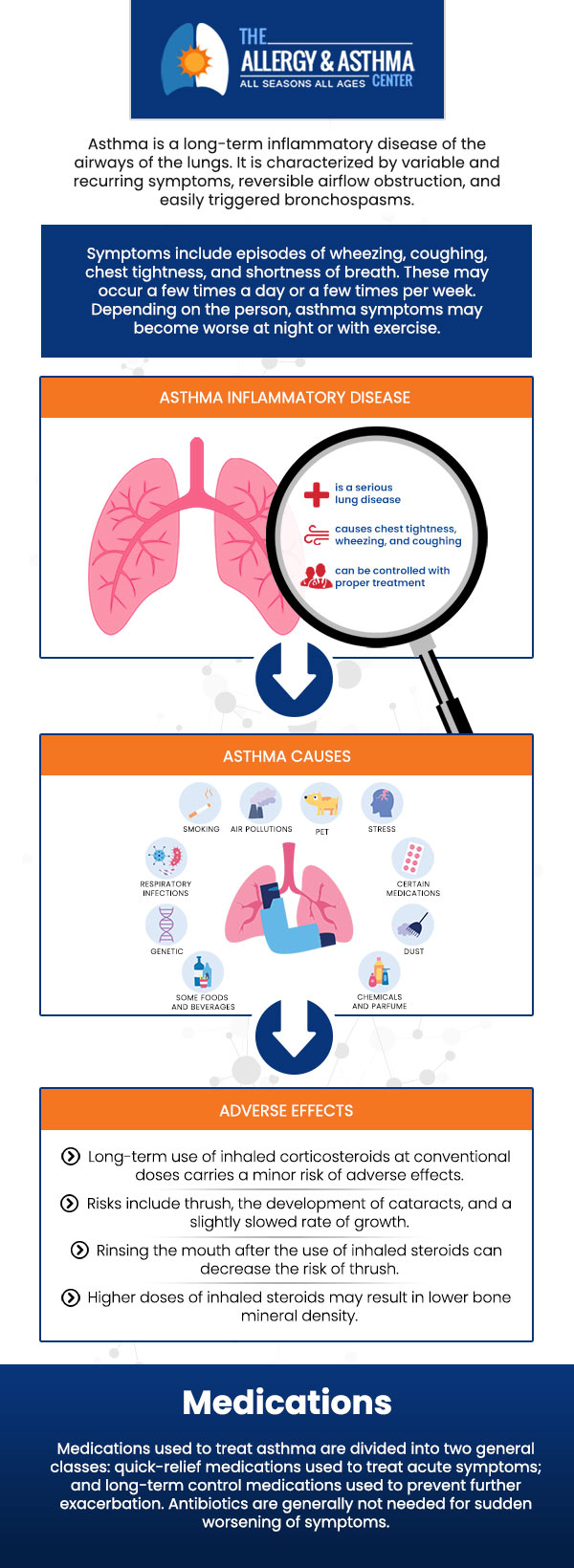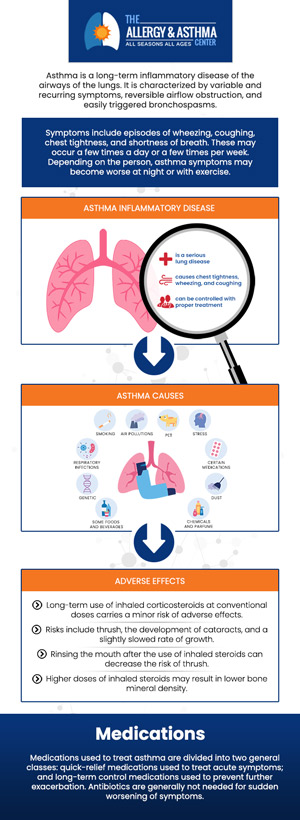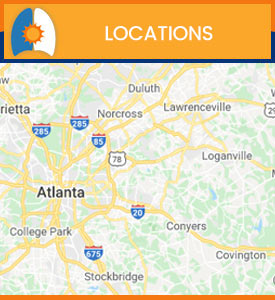Asthma Doctors in Atlanta, Lawrenceville, & Conyers, GA
Asthma is a respiratory disorder that affects the lungs. It produces frequent occurrences of wheezing, shortness of breath, chest tightness, and nighttime or early morning coughing. Asthma may be treated by taking medication and avoiding the factors that might induce an attack. If you are suffering from asthma visit The Asthma & Allergy Center, Dr. Jon E. Stahlman, MD and his passionate staff would help you to take the necessary precautions to manage your asthma action plans. For more information, please contact us or book an appointment online. We serve patients from Lawrenceville GA, Atlanta GA, Conyers GA, Suwanee GA, Duluth GA, Grayson GA, Decatur GA, Brookhaven GA, Lithonia GA, and Covington GA.




Asthma Action Plans-Why They Are Important
Managing asthma can sometimes be confusing. That is why an asthma action plan is recommended for every person with asthma. An asthma action plan is a written plan you develop with your doctor to help you manage your asthma. A good action plan should list your daily controller medications and rescue medications. The plan should also list how your asthma medicines should be taken when asthma is doing well and during exacerbations. It should also give guidance on when to call your health care provider or go to the emergency room.
Most asthma action plan use a green, yellow, and red zone system. The green zone symbolizes when asthma is doing well and you do not have any symptoms. If your doctor has placed you on a daily controller medication you should take this medicine daily even if you are feeling well.
Daily controller medications include inhaled corticosteroids such as Qvar and Advair and leukotriene modifiers such as montelukast. The yellow zone symbolizes when you are having asthma symptoms. Your plan should list which quick relief medicines you should take in addition to your daily controller and when to call your doctor. The red zone indicates symptoms of a severe exacerbation including severe difficulty breathing not improving with rescue medication. If symptoms are in the red zone you should seek immediate medical care. You should write the phone numbers for your primary care doctor and your asthma specialist if you have one on your asthma action plan.
Determining which zone you are can be based on your asthma symptoms or peak flow meter readings.
Symptoms: Asthma symptoms can present differently in different people. These symptoms can include cough, chest pain, wheezing, shortness of breath, exercise-induced symptoms, difficulty breathing, and a feeling of tightness in your chest. Not everybody has all of these symptoms. You should listen to your body to know which symptoms indicate an asthma attack for you.
Peak flow: A peak flow meter is a device that measures your force on exhalation. You will first determine your personal best peak flow by using peak flow daily when you are asymptomatic for several days. Then you use peak flow meter when you are having symptoms to help determine which zone you are in. Not everyone needs a peak flow meter but it can be helpful for people that have a hard time recognizing their asthma symptoms.
Feel free to download a printable copy of an asthma action plan below suitable for home or school




